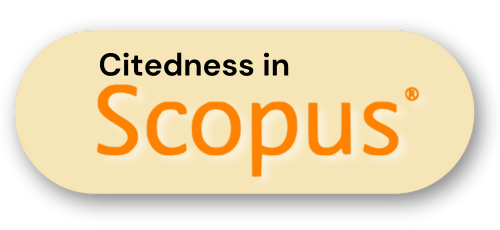Digital Activism and Collective Mobilization: A Narrative Review of Social Identity, Group Efficacy, and the SIMCA Framework
DOI:
https://doi.org/10.61194/psychology.v3i1.691Keywords:
Collective Action, Social Identity, Group Efficacy, Digital Activism, Structural Barriers, Emotional Mobilization, Participatory PolicyAbstract
Collective action has long been driven by social psychological mechanisms, particularly collective identity and group efficacy. This narrative review examines the interplay of identity, emotion, and structural conditions in predicting participation in collective mobilization. Drawing on empirical findings from multiple cross-national studies, the review integrates qualitative and quantitative insights to understand how emotional catalysts and digital narratives reinforce collective identification. The methodology involved a systematic review of studies indexed in Scopus, Web of Science, and Google Scholar, using key terms such as "collective action," "social identity," and "group efficacy." Inclusion criteria prioritized peer-reviewed journal articles that employed mixed-method approaches to examine protest dynamics, psychological predictors, and digital activism. The findings confirm that strong social identity, group efficacy, and collective emotion (especially anger and hope) serve as principal motivators for collective participation. However, participation is also mediated by internal constraints such as identity misalignment, and external structural barriers such as authoritarianism, resource scarcity, and cultural repression. Digital media has emerged as a crucial enabler, reinforcing group solidarity and mobilization narratives. These insights underline the importance of inclusive, context-sensitive policies and interdisciplinary strategies in overcoming systemic impediments to mobilization. Future studies should address variations across cultural and geopolitical contexts and explore how technological innovation can facilitate equitable collective engagement. Understanding the synergy between psychological and structural determinants is essential for advancing sustainable collective action.
References
Alcalde‐González, V., Mozo, A., & Valenzuela‐Bustos, A. (2022). ‘las kellys son las que limpian’: collective identity and social media in the mobilisation of room attendants in spain. New Media & Society, 26(5), 2914-2931. https://doi.org/10.1177/14614448221097891 DOI: https://doi.org/10.1177/14614448221097891
Ayanian, A. and Tausch, N. (2016). How risk perception shapes collective action intentions in repressive contexts: a study of egyptian activists during the 2013 post‐coup uprising. British Journal of Social Psychology, 55(4), 700-721. https://doi.org/10.1111/bjso.12164 DOI: https://doi.org/10.1111/bjso.12164
Bernroider, E., Harindranath, G., & Kamel, S. (2022). From connective actions in social movements to offline collective actions: an individual level perspective. Information Technology and People, 35(8), 205-230. https://doi.org/10.1108/itp-08-2020-0556 DOI: https://doi.org/10.1108/ITP-08-2020-0556
Blackwood, L. and Louis, W. (2011). If it matters for the group then it matters to me: collective action outcomes for seasoned activists. British Journal of Social Psychology, 51(1), 72-92. https://doi.org/10.1111/j.2044-8309.2010.02001.x DOI: https://doi.org/10.1111/j.2044-8309.2010.02001.x
Carvacho, H., González, R., Cheyre, M., Rocha, C., Cornejo, M., Jiménez‐Moya, G., … & Livingstone, A. (2023). When social movements fail or succeed: social psychological consequences of a collective action’s outcome. Frontiers in Psychology, 14. https://doi.org/10.3389/fpsyg.2023.1155950 DOI: https://doi.org/10.3389/fpsyg.2023.1155950
Castro‐Abril, P., Costa, S., Navarro‐Carrillo, G., Caicedo‐Moreno, A., Gracia‐Leiva, M., Bouchat, P., … & Rovira, D. (2021). Social identity, perceived emotional synchrony, creativity, social representations, and participation in social movements: the case of the 2019 chilean populist protests. Frontiers in Psychology, 12. https://doi.org/10.3389/fpsyg.2021.764434 DOI: https://doi.org/10.3389/fpsyg.2021.764434
Chan, M. (2016). Media use and the social identity model of collective action: examining the roles of online alternative news and social media news. Journalism & Mass Communication Quarterly, 94(3), 663-681. https://doi.org/10.1177/1077699016638837 DOI: https://doi.org/10.1177/1077699016638837
Choma, B., Sumantry, D., & Nasser, L. (2024). Sociopolitical ideologies as predictors of collective action across liberal and conservative domains: injustice‐based anger, efficacy, and empathy as mediators. Journal of Applied Social Psychology, 54(8), 474-486. https://doi.org/10.1111/jasp.13054 DOI: https://doi.org/10.1111/jasp.13054
Freel, S. and Bilali, R. (2022). Putting the past into action: how historical narratives shape participation in collective action. European Journal of Social Psychology, 52(1), 204-222. https://doi.org/10.1002/ejsp.2813 DOI: https://doi.org/10.1002/ejsp.2813
Gulliver, R., Chan, C., Chan, W., Tam, K., & Louis, W. (2023). Bystanders, protesters, journalists: a qualitative examination of different stakeholders’ motivations to participate in collective action. Journal of Pacific Rim Psychology, 17. https://doi.org/10.1177/18344909231187018 DOI: https://doi.org/10.1177/18344909231187018
Jiménez‐Moya, G., Miranda, D., Drury, J., Saavedra, P., & González, R. (2018). When nonactivists care: group efficacy mediates the effect of social identification and perceived instability on the legitimacy of collective action. Group Processes & Intergroup Relations, 22(4), 563-577. https://doi.org/10.1177/1368430217751631 DOI: https://doi.org/10.1177/1368430217751631
Keshavarzi, S., McGarty, C., & Khajehnoori, B. (2021). Testing social identity models of collective action in an iranian environmental movement. Journal of Community & Applied Social Psychology, 31(4), 452-464. https://doi.org/10.1002/casp.2523 DOI: https://doi.org/10.1002/casp.2523
Kurland, N. and McCaffrey, S. (2016). Social movement organization leaders and the creation of markets for “local” goods. Business & Society, 55(7), 1017-1058. https://doi.org/10.1177/0007650314549439 DOI: https://doi.org/10.1177/0007650314549439
Park, J. (2019). In the name of immigrant mothers: gendered mobilization of korean-chinese women in south korea. Asian Journal of Women’s Studies, 25(4), 515-536. https://doi.org/10.1080/12259276.2019.1675848 DOI: https://doi.org/10.1080/12259276.2019.1675848
Perugorría, I. and Tejerina, B. (2013). Politics of the encounter: cognition, emotions, and networks in the spanish 15m. Current Sociology, 61(4), 424-442. https://doi.org/10.1177/0011392113479743 DOI: https://doi.org/10.1177/0011392113479743
Pozzi, M., Passini, S., Chayinska, M., Morselli, D., Ellena, A., Włodarczyk, A., … & Pistoni, C. (2022). ‘coming together to awaken our democracy’: examining precursors of emergent social identity and collective action among activists and non‐activists in the 2019–2020 ‘chile despertó’ protests. Journal of Community & Applied Social Psychology, 32(5), 830-845. https://doi.org/10.1002/casp.2598 DOI: https://doi.org/10.1002/casp.2598
Reichert, F., Au, A., & Fiedler, A. (2023). How collective demands strengthen sympathy for normative and non‐normative protest action: the example of hong kong's anti‐extradition law amendment bill protests. Sociology Compass, 18(1). https://doi.org/10.1111/soc4.13169 DOI: https://doi.org/10.1111/soc4.13169
Saab, R., Tausch, N., Spears, R., & Cheung, W. (2014). Acting in solidarity: testing an extended dual pathway model of collective action by bystander group members. British Journal of Social Psychology, 54(3), 539-560. https://doi.org/10.1111/bjso.12095 DOI: https://doi.org/10.1111/bjso.12095
Sexton, L. and Jenness, V. (2016). “we’re like community”: collective identity and collective efficacy among transgender women in prisons for men. Punishment & Society, 18(5), 544-577. https://doi.org/10.1177/1462474516642859 DOI: https://doi.org/10.1177/1462474516642859
Shafi, S. and Ran, B. (2021). Social movements as complex adaptive systems: the antecedents and consequences of movement participation in the age of social media. The Social Science Journal, 1-20. https://doi.org/10.1080/03623319.2021.1949551 DOI: https://doi.org/10.1080/03623319.2021.1949551
Stuart, A., Thomas, E., & Donaghue, N. (2018). “i don't really want to be associated with the self-righteous left extreme”: disincentives to participation in collective action. Journal of Social and Political Psychology, 6(1), 242-270. https://doi.org/10.5964/jspp.v6i1.567 DOI: https://doi.org/10.5964/jspp.v6i1.567
Włodarczyk, A., Basabe, N., Rovira, D., & Zumeta, L. (2017). Hope and anger as mediators between collective action frames and participation in collective mobilization: the case of 15-m. Journal of Social and Political Psychology, 5(1), 200-223. https://doi.org/10.5964/jspp.v5i1.471 DOI: https://doi.org/10.5964/jspp.v5i1.471
Zomeren, M. (2016). Building a tower of babel? integrating core motivations and features of social structure into the political psychology of political action. Political Psychology, 37(S1), 87-114. https://doi.org/10.1111/pops.12322 DOI: https://doi.org/10.1111/pops.12322





